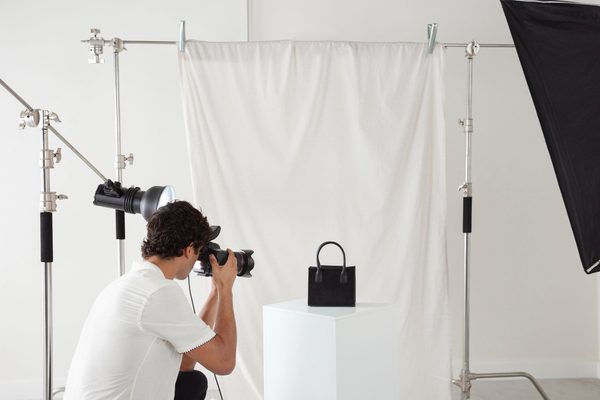Want to know what makes some online stores stand out with their visuals while others fall flat? Curious about what is ecommerce photography and why it’s so important for online sellers? If you’ve ever wondered how product images can make or break an ecommerce business then this post is for you.
Ecommerce photography is all about creating high-quality product images that showcase your items in the best light. Customers can’t touch or try out your products in eCommerce. Your photos do all the talking.
The photos also boost trust to drive sales. That’s why great visuals are essential for success in the online marketplace.
In this post, I’ll share exactly what ecommerce photography is and why it’s critical for your business.
Stick around to learn about the benefits, the tools you can use, and simple tips to create professional-looking photos.
By the end, you’ll have all the knowledge you need to level up your online store. Let’s dive in!
What Is Ecommerce Photography?
Ecommerce photography is the process of capturing professional-quality images for online stores.
These photos aim to showcase products in the best possible light. This helps customers make purchasing decisions.
For example, think about those clean and high quality images on Amazon or Etsy. They’re all part of ecommerce photography.
Good product photos are really important. They bridge the gap between physical and digital shopping. It also helps customers see every detail, angle, and feature.
Why Ecommerce Photography Matters
Quality photos aren’t just about aesthetics. They’re also a business tool. Here’s why:
- First impressions matter: Your photos are the first thing customers notice. Low-quality images can turn them away instantly.
- Build trust: High-quality images signal professionalism. This way customers are more likely to trust your store.
- Increase conversions: Studies show that professional product photos can boost sales and reduce returns.
Let’s take an example. Have you seen Apple’s product photos? Their minimalist and clean style focuses on every detail of their products. Such as the sleek edges of an iPhone.
This style sets a high standard and creates trust. It also makes customers confident about buying.
Examples of Successful Ecommerce Photography
- Warby Parker: Their photos highlight their glasses’ designs and fit through consistent product images and lifestyle shots.
- Nike: They combine dynamic action shots with detailed close-ups of their products.
- Etsy Sellers: Small businesses often use creative flat lays or lifestyle photos to show their handmade goods in real-life scenarios.
These brands prove that professional product photography isn’t just for aesthetics. But it’s a strategy to drive sales.
Try our e-commerce photo editing service with a free trial
Why Is Ecommerce Photography Important for Your Online Business?
Ever wondered why some products sell faster online than others, even when they’re priced the same? The answer often lies in their visuals.
Ecommerce photography plays a huge role in influencing buyer decisions. Because people shop with their eyes first.
High-quality ecommerce product images do more than just show what you’re selling. They also create trust, build credibility, and help customers imagine owning your product.
Think about it: would you buy from an online store with blurry and low-quality photos? Probably not!
The Impact of Visuals on Buyer Decisions
Studies show that 75% of online shoppers rely on product photos when deciding what to buy. This makes sense because, in ecommerce, customers can’t touch or try your products. The images are the closest they get to a real-life experience.
Great visuals help buyers feel confident about their purchase. For example, detailed product photos can show texture, color, and size. Thisreduces guesswork. This trust also translates directly into sales.
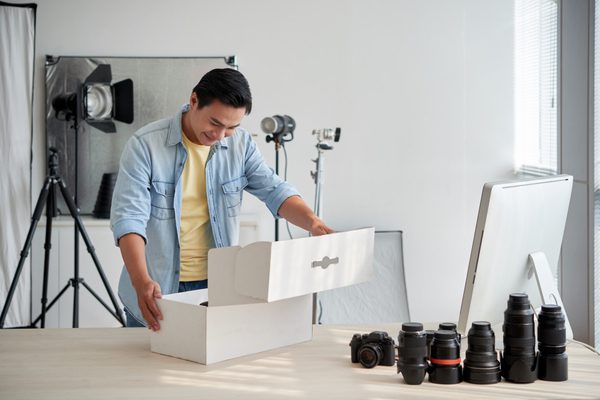
How Ecommerce Photography Builds Trust
High-quality photos show that you care about your brand and your customers. They make your store look professional.
This also encourages buyers to trust you. This is really important for new or small businesses competing with big-name brands.
Take Amazon, for example. Their product pages are full of clean and professional images that show products from every angle.
This sets a standard for trust and reliability that customers have come to expect.
Statistics on Image Quality and Conversions
Did you know that online stores with high-quality product images see up to 30% more conversions?
Clear, professional visuals make your products stand out. This also gives customers a reason to hit “Add to Cart.”
Not only that, but good images can also reduce return rates. When customers see exactly what they’re getting, they’re less likely to feel disappointed after their purchase. This can save you time and money on returns and exchanges.
Why Professional Photos Are a Must
DIY product photos might save money but investing in professional product photo quality can make a huge difference. Well-lit images instantly elevate your brand and help you compete with established stores.
If you’re selling on platforms like Shopify or Etsy, professional images are a game-changer.
Check out Top Professional Ecommerce Image Editing Services
Types of Ecommerce Photography
Ecommerce photography isn’t a one-size-fits-all deal. Different products and businesses require different styles of photography to appeal to customers.
Let me walk you through the most common types and when to use them.
Product-Only Ecommerce Photography
This is the classic white background shot you see on most online stores. It’s simple, clean, and keeps all the focus on the product.
If you’re listing items on Amazon or other marketplaces then this style is often required.
- When to use it: Ideal for product catalogs, Amazon listings, and minimalist websites.
Lifestyle Photography
Lifestyle ecommerce photography shows products in action.
For example, a pair of shoes might be shown on someone walking outdoors, or a sofa might be styled in a cozy living room. This helps customers picture the product in their lives.
- When to use it: Great for social media, product ads, and creating an emotional connection with buyers.
Detailed Close-Ups Photography
Close-up shots highlight important details like stitching, textures, or product features. These photos are perfect for customers who want to examine a product before buying.
- When to use it: Best for fashion items, jewelry, or anything with intricate details.
360-Degree Product Photography
This interactive style lets customers view the product from every angle. It’s really useful for tech gadgets, furniture, and anything where the back and sides matter as much as the front.
- When to use it: Perfect for websites looking to give customers a hands-on shopping experience.
Flat Lay Photography
Flat lays are all about arranging products on a flat surface in an aesthetic way. This style is hugely popular for fashion, beauty, and home goods.
- When to use it: Best for Instagram, blog content, and curated online stores.
By choosing the right style, you can make your products more appealing and relatable to your audience.
What is the best size for ecommerce product images
Essential Equipment for Ecommerce Photography
You don’t need to spend a fortune to get started with ecommerce photography. But having the right tools can make a big difference in your results.
Here’s what you’ll need:
Cameras for Ecommerce Photography: Professional vs. Smartphone
A DSLR camera is best for product photo quality. Butt if you’re on a budget then newer smartphones can work too.
Phones like the iPhone 16 or Samsung Galaxy S24 have excellent cameras that can capture sharp images.
- Pro tip: Always use a tripod for steady and blur-free shots.
Lighting for Ecommerce Photography: Natural vs. Studio Light
Lighting can make or break your photos. Natural light is great for beginners. But studio lights give you full control. Softboxes and ring lights are popular options for ecommerce shoots.
- Pro tip: You should avoid harsh shadows by diffusing the light with reflectors or softboxes.
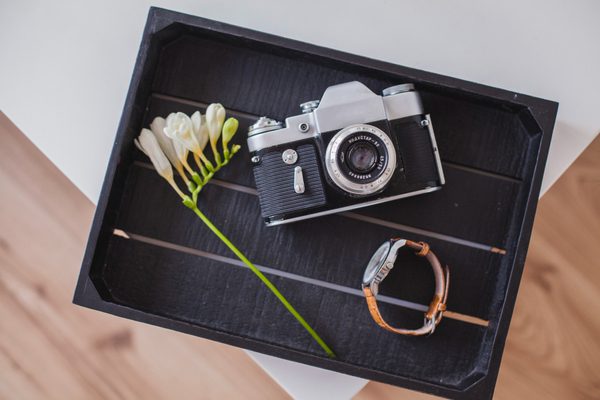
Backgrounds for Ecommerce Photography: White Backdrops and Lightboxes
White backgrounds are a must for marketplaces like Amazon. You can use a plain white sheet, poster board, or invest in a lightbox for consistent results.
- Pro tip: Keep your background clean and clutter-free for a professional look.
Editing Tools for Ecommerce Photos
Once you’ve taken your photos, editing can help polish them. Software like Adobe Photoshop and Adobe Lightroom is great for advanced edits. But free tools like Canva or Snapseed are perfect for beginners.
- Pro tip: Adjust brightness, contrast, and colors to make your photos pop.
Accessories for Ecommerce Photography: Tripods and Reflectors
A sturdy tripod keeps your camera steady, while reflectors help bounce light onto your product. These small tools can make a big difference in the quality of your photos.
You’ll be well on your way to creating stunning ecommerce product images by investing in the right equipment and tools. This helps you to grab attention and boost sales.
For more tips, check out this video on product photography equipment:
DIY vs. Professional Ecommerce Photography: Which Should You Choose?
When deciding between DIY and professional ecommerce photography, it really comes down to your needs and resources. Let’s break it down.
Benefits of DIY Ecommerce Photography
If you’re on a tight budget or running a small online store then DIY product photography can be a practical option. It’s cost-effective, fast, and gives you full control over the process.
You can create decent product photos with basic equipment like a smartphone, some good lighting, and a clean background.
Also, many free or budget-friendly editing tools, like Canva or Snapseed, make enhancing your photos easier.
However, DIY works best for simpler products, straightforward shots, or when you’re just starting out. If you want to keep things simple and affordable then DIY is the way to go.
When to Hire Professional Ecommerce Photographers
For larger stores, high-end brands, or products with intricate details, hiring professional photographers is often worth the investment.
Professionals have the expertise to make your products shine. They know how to handle complex products like jewelry, glass, or clothing with textures.
Professional services are also ideal if you need consistency across hundreds of products or if you want lifestyle shots that tell a story. Though it might cost more upfront but it can help build your brand image. This will also oost sales in the long run.
Cost Comparison: DIY vs. Professional Services
DIY photography can cost as little as $0 if you already have the basics. But expenses like tripods, lighting kits, or backdrops might add up.
On the other hand, professional services can range from $20 to $100 per image. This depends on the photographer and complexity of the shoot.
How to Decide
Start by assessing your budget, the type of products you sell, and your time availability. If your photos are the first thing customers notice then think about whether DIY will meet your quality needs.
For a middle ground, you could shoot simple product photos yourself and outsource a few high-impact shots to professionals.
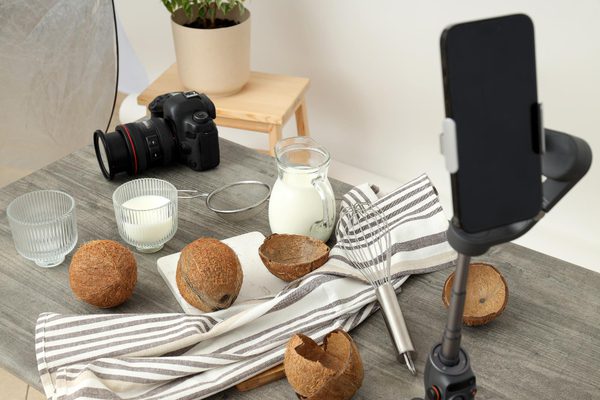
Step-by-Step Guide to Taking Ecommerce Photos
Taking great ecommerce photos doesn’t have to be overwhelming. Follow these steps, and you’ll create professional-looking product images in no time.
Step 1: Choose the Right Equipment
You don’t always need an expensive camera. A good smartphone with a high-resolution camera can do the job.
If you prefer professional equipment then go for a DSLR camera with basic lenses.
Step 2: Prepare Your Product
Make sure your product is clean, dust-free, and neatly arranged. If it’s clothing then iron it.
For items like jewelry, wipe them down for extra shine. Proper preparation ensures your product looks its best in photos.
Step 3: Set Up the Background and Lighting
Use a plain white background for most product photos. Lightboxes or a large white sheet work well.
For lighting, natural light near a window is great. But studio lighting with softboxes or LED panels gives you more control.
Step 4: Frame and Shoot
Position your camera or phone on a tripod for stability. Experiment with different angles, like straight-on shots, side profiles, and close-ups of details.
Keep the frame simple and ensure the entire product is in focus.
Step 5: Post-Production Editing
After shooting, you should use editing tools like Photoshop or Lightroom for color correction, cropping, and resizing. Aim to enhance the image without making it look unrealistic.
Pro Tips for Beginners
- Use gridlines on your camera to align the product.
- Avoid harsh shadows by diffusing the light with reflectors or thin white fabric.
- Always take multiple shots so you have options.
Common Mistakes to Avoid in Ecommerce Photography
Even small mistakes in ecommerce photography can make your products look unprofessional. Here’s what to watch out for:
Poor Lighting or Overexposure
Bad lighting can make your photos look dull or washed out. Always test your lighting before shooting, and use diffused light to avoid harsh shadows.
Failing to Capture Product Details
Blurry or poorly framed photos fail to show the details buyers want to see. Use proper focus and take close-ups of unique features.
Overediting Photos
It’s tempting to boost colors or remove imperfections. But overediting can make your photos look fake. Stick to subtle adjustments for a natural appearance.
Inconsistent Image Sizing
Different image sizes across your site can confuse buyers and look unprofessional. Stick to the same dimensions for all product images.
Neglecting Mobile Optimization
Many shoppers browse on their phones. If your images are slow to load or don’t look good on smaller screens. Because you risk losing customers. Compress images for faster loading without sacrificing quality.
Related Read
Avoid these pitfalls by learning from common product photography mistakes.
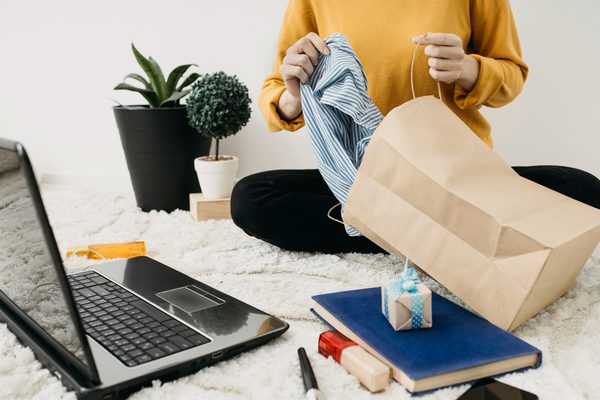
Ecommerce Photography and SEO: Optimizing Product Images
What is ecommerce photography really about? It’s not just about making your products look good but also about getting them found. This is where image SEO comes in.
You can do this by optimizing your product images. You can improve your search rankings and help your potential customers find your store.
Importance of Image SEO in Ecommerce
Optimizing your product images helps search engines understand what your photos are about. It also enhances user experience by speeding up your website and making it easier for customers to find exactly what they’re looking for.
In fact, images with proper SEO are more likely to show up in Google image searches. This ultimately drives more traffic to your site.
How to Optimize Your Ecommerce Product Photos
- Use Descriptive Filenames: Name your image files based on the product and include the main keyword, like “what-is-ecommerce-photography.jpg”. This tells search engines what the image is and boosts your SEO.
- Add Alt Tags: Alt tags (alternative text) describe your image for both search engines and users. Use clear, relevant descriptions. Such as “what is ecommerce photography image” or “high-quality product photo of running shoes.” These tags can also improve SEO and are essential for accessibility.
- Compress Images for Faster Loading Speeds: Large images can slow down your website. This harms SEO and user experience. You can use tools like TinyPNG or ImageOptim to reduce file size without losing quality. Fast-loading images lead to happier customers and better rankings.
- Use Image Sitemaps: Image sitemaps help search engines find and index your images more easily. If you’re managing a large ecommerce site then consider using an image sitemap to ensure all your product photos are discoverable.
Tools for Optimizing Photos for SEO
Several tools can help optimize your images for SEO:
- ImageOptim or TinyPNG for image compression.
- Google’s PageSpeed Insights to check loading speed of you website.
- Yoast SEO for managing alt tags and sitemaps of your eCommerce website.
By taking these steps, you can make sure your ecommerce photos not only look great but also perform well in search engines.
How to color match images for eCommerce: Complete Guide
Tools and Software for Ecommerce Photography
Having the right tools can make a huge difference in eCommerce photography. If you’re doing everything yourself or just editing photos then there are many great tools to help you achieve professional-quality images.
Photo Editing Tools
Editing your product photos helps improve color, sharpness, and overall presentation. Here are some popular tools:
- Photoshop: Adobe Photoshop is best for professional photo editing. It has endless options for enhancing your product images.
- Canva: Canva is a user-friendly option for beginners. Because it has templates and basic editing features.
- Lightroom: Adobe Lightroom is perfect for photographers who want to adjust color balance and lighting across multiple images.
How to Edit Photos for Ecommerce That Boost Conversions
AI-Based Photo Editing Tools
For quick fixes and background removal AI-based tools can save you time:
- Remove.bg: Remove.bg automatically removes backgrounds and is perfect for clean product shots.
- Fotor: A great tool for AI-driven editing and enhancements for small adjustments.
Camera Apps
If you’re using your phone for ecommerce photography, camera apps can give you more control:
- ProCamera: A solid camera app for both iPhone and Android users, offering manual control over exposure, focus, and white balance.
- Snapseed: Another great app with powerful editing features to fine-tune your images.
Best Tools for Small Business Owners on a Budget
For those just starting out or working on a tight budget, tools like Canva for basic edits and Remove.bg for background removal are affordable and effective.
Related Read
Check out my guide for a deeper dive into Best Ecommerce Image Editing Software.
How Ecommerce Photography Influences Branding
Ecommerce photography isn’t just about showing your products. It’s an integral part of your brand identity.
The photos you use can influence how customers perceive your brand and whether they trust you.
The Role of Consistent Visuals in Branding
Your ecommerce photos should align with your overall brand. From the style of photography to the colors and layout, consistency helps create a strong visual identity.
If you’re selling high-end products or casual items then your photos should reflect that tone.
For example, a luxury brand should use high-quality and sleek images. On the other hand, more casual brands can opt for lifestyle shots with a relaxed feel.
How High-Quality Images Build Trust and Loyalty
Customers trust businesses that showcase their products clearly. High-quality images not only highlight the details but also demonstrate professionalism.
This can make a big difference when someone is deciding whether or not to buy. Well-lit and clear photos build trust. While blurry or poorly lit images can turn potential customers away.
Examples of Brands Nailing Ecommerce Photography
Take a look at brands like Amazon or Etsy. They consistently use professional images to build their brand.
Their product photos not only look clean and sharp but are also styled to match their branding.
For example, Amazon uses clear and simple product shots. On the other hand many Etsy sellers use styled photos to reflect their unique and creative brands.
Tips for Aligning Photography Style with Your Brand Identity
- Choose a consistent backdrop for your product shots.
- Use colors and props that reflect your brand’s personality.
- Decide whether you want lifestyle shots or clean, minimalistic images.
- Pay attention to lighting and tone to keep things cohesive across your store.
You can strengthen your brand’s identity by focusing on consistent and high-quality photography. They also create a memorable experience for your customers.
Related Read
Explore more about branding with ecommerce images and how to make your product photos align with your brand identity.
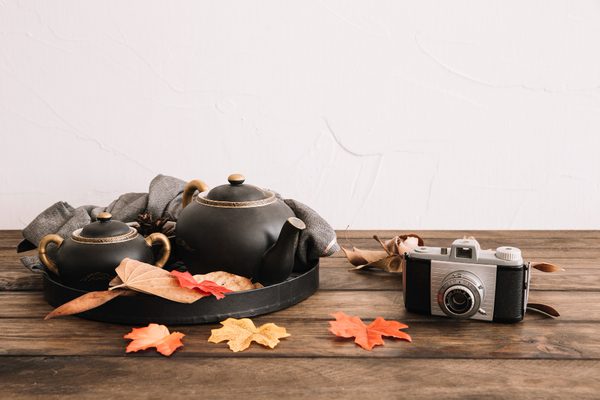
Hiring an Ecommerce Photographer: What to Look For
Choosing the right photographer for your product photos can make a huge difference in your online store’s success. Let me break down what you should look for and where you can find talented photographers.
1. Look for Experience in Product Photography
Not all photographers specialize in ecommerce photography. It’s essential to find someone with experience in shooting products.
Check if they have worked with online sellers or businesses like yours. Experienced photographers understand lighting, angles, and techniques that make your products stand out.
2. Evaluate Their Portfolio
Always review their portfolio. A strong portfolio will show the photographer’s ability to capture clear, high-quality images that match different brand styles.
Look for consistency, attention to detail, and how well they present products in their previous work.
3. Understand Their Pricing Models
Photographers have different pricing structures. Some charge by the hour, while others charge per project or per image.
Make sure you know what’s included in their package. Ask if they provide editing and retouching services. Because these can save you time and money.
4. Know Where to Find Skilled Photographers
There are several platforms where you can hire professional ecommerce photographers. Popular options include:
- Upwork: Upwork is a great place to find experienced freelance photographers for your budget.
- Fiverr: Fiverr is ideal for affordable options and quick projects.
- Photography Agencies: For larger projects, agencies often have a team of professionals with expertise in ecommerce photography.
5. Ask the Right Questions Before Hiring
Before finalizing your choice, ask questions like:
- Have you worked on ecommerce photography projects before?
- Do you have experience with similar products?
- What is your process for delivering images?
- Do you offer revisions or retouching?
These questions will help you ensure the photographer is the right fit for your needs.
As you look for a professional, keep in mind that “hiring product photographers” or “professional ecommerce photography services” is about finding someone who can make your products shine.
You can also explore platforms like Upwork and Fiverr to connect with skilled freelance product photographers.
Case Studies: Ecommerce Photography Success Stories
When people ask, “what is ecommerce photography, and why does it matter?” I love pointing to real-life examples.
Here are three case studies showing how better product photos helped brands grow their sales.
Case Study 1: Modern Glow – A Skincare Brand
Challenge: Modern Glow, a small skincare business, struggled with low conversion rates. Their original product photos also lacked detail and appeared dull on mobile devices.
Solution: They invested in professional ecommerce photography. The photographer used consistent lighting, close-up shots to highlight product textures, and clean white backgrounds. Alt tags were optimized with keywords like “hydrating face cream for dry skin.”
Results: Within three months, Modern Glow saw:
- A 35% increase in online sales.
- A 50% improvement in product page engagement.
- Faster loading times by compressing high-quality images.
This shows that clear and high-quality photos directly impact buyer trust and sales.
Case Study 2: Urban Gear Co. – An Outdoor Gear Store
Challenge: Urban Gear Co. had a strong product line but received poor customer feedback about unclear product photos. Buyers also struggled to see key product details like zippers or material quality.
Solution: They revamped their product photos by using lifestyle photography. Pictures of backpacks being used in real hiking environments added context. Each product image included zoomed-in shots of materials and features.
Results: Over six months, the brand reported:
- A 45% increase in cart-to-purchase conversions.
- A 60% rise in social media engagement, driven by better visuals.
- Fewer product returns due to clearer expectations set by the photos.
Urban Gear Co. also gained repeat customers who praised their professional-looking online store.
Case Study 3: Luxe Charm Jewelry – A Jewelry Brand
Challenge: Luxe Charm Jewelry faced intense competition in the ecommerce jewelry space. Their basic photos failed to capture the sparkle and elegance of their products. These cause them to lose potential buyers.
Solution: The brand hired a professional photographer specializing in jewelry. They used macro shots to highlight intricate details, adjusted lighting to enhance sparkle, and added a subtle shadow effect for depth. Alt tags like “gold diamond necklace for weddings” helped with SEO.
Results: After the photo update, Luxe Charm Jewelry experienced:
- A 50% jump in sales within two months.
- A significant boost in Google rankings for product pages.
- Positive customer feedback mentioning how the photos helped them decide to buy.
These results show that great product photography can make even a crowded market work for you.
Why These Case Studies Matter
These examples answer the question, “what is ecommerce photography?” They prove how professional product photos can improve your brand’s trustworthiness and sales.
How to take product photos for ecommerce according to experts
Trends in Ecommerce Photography for 2024 and Beyond
If you’re wondering what is ecommerce photography going to look like in 2024 and beyond then let me share some exciting trends that are shaping the future.
Staying ahead of these trends can help your online store stand out and offer a better shopping experience.
1. AR and 3D Photography
Augmented reality (AR) and 3D product images are becoming a big deal in ecommerce.
Because customers can now view products in 360 degrees or virtually place items in their space.
For example, furniture retailers like IKEA let shoppers see how a chair looks in their living room using AR.
Why does this matter? Shoppers love interactivity, and AR/3D features reduce hesitation.
Studies show that stores using 3D visuals saw a 40% increase in conversions.
2. Interactive Product Displays
Interactive product displays, like zoom-in functionality or clickable hotspots, make shopping more engaging.
A zoomed-in view of fabric patterns or product textures can influence purchase decisions. These displays also help clarify product details, reducing returns.
3. Personalized Product Visuals
Personalization is everywhere, and ecommerce photography is no exception. Some brands now allow customers to personalize product visuals.
For example, a customer ordering a custom mug can preview it with their name or photo before purchasing. This also creates a more tailored shopping experience.
How to Stay Ahead
To stay ahead, focus on offering visuals that engage and educate customers. Invest in AR/3D capabilities if your products benefit from it.
If you’re not ready for AR then start with high-quality, interactive product images. You’ll build trust and help customers make confident buying decisions.
For more tips, check out this guide on product photography trends for online stores.
Conclusion
Ecommerce photography plays a huge role in selling online. If you’ve ever wondered what is eCommerce photography or why it matters then I hope this guide helped you understand its impact.
From creating visually stunning photos to optimizing them for SEO, these steps can transform your online store.
Start small if you’re new to photography. Then upgrade your skills and tools as you grow. And don’t be afraid to invest in professionals if you need that polished look.
If you need eCommerce photo editing help then check out Smart Clipping’s services.
Let me know in the comments if you’ve tried any of these tips. I’d love to hear about your success!
FAQs About “What is Ecommerce Photography”
I often hear questions from people curious about what is ecommerce photography and how to get started.
Here are some answers to common questions:
What is ecommerce photography?
Ecommerce photography is the process of creating product photos for online stores. These photos showcase the product clearly, and help customers decide whether to buy.
How do I start with product photography?
You can start with basic equipment like a smartphone camera, natural lighting, and a plain background. As you grow, consider investing in a DSLR camera, lighting kits, and editing software.
Is a professional photographer necessary?
It depends on your budget and goals. If you’re selling a few handmade items, DIY photos can work. But if you want high-quality visuals for a large store then hiring a professional photographer is worth it.
What is the best camera for ecommerce photography?
DSLR cameras like the Canon EOS Rebel or Nikon D3500 are great options. If you’re on a budget then newer smartphones also take fantastic photos.
How can I optimize product photos for SEO?
Use descriptive filenames (e.g., “blue-sneakers.jpg”). Add alt text with keywords like “comfortable blue sneakers for running.” Compress image files to ensure fast loading times.


